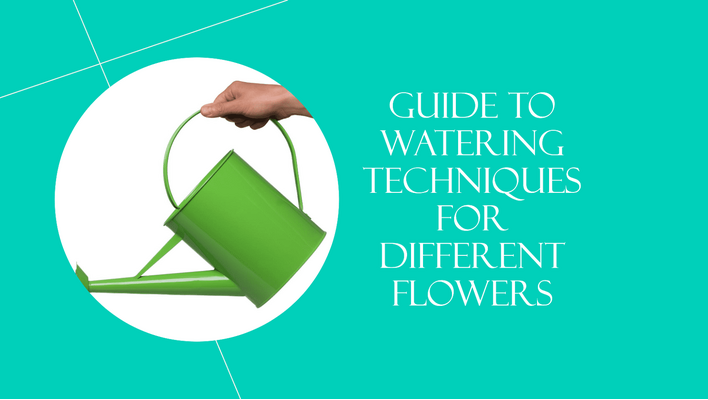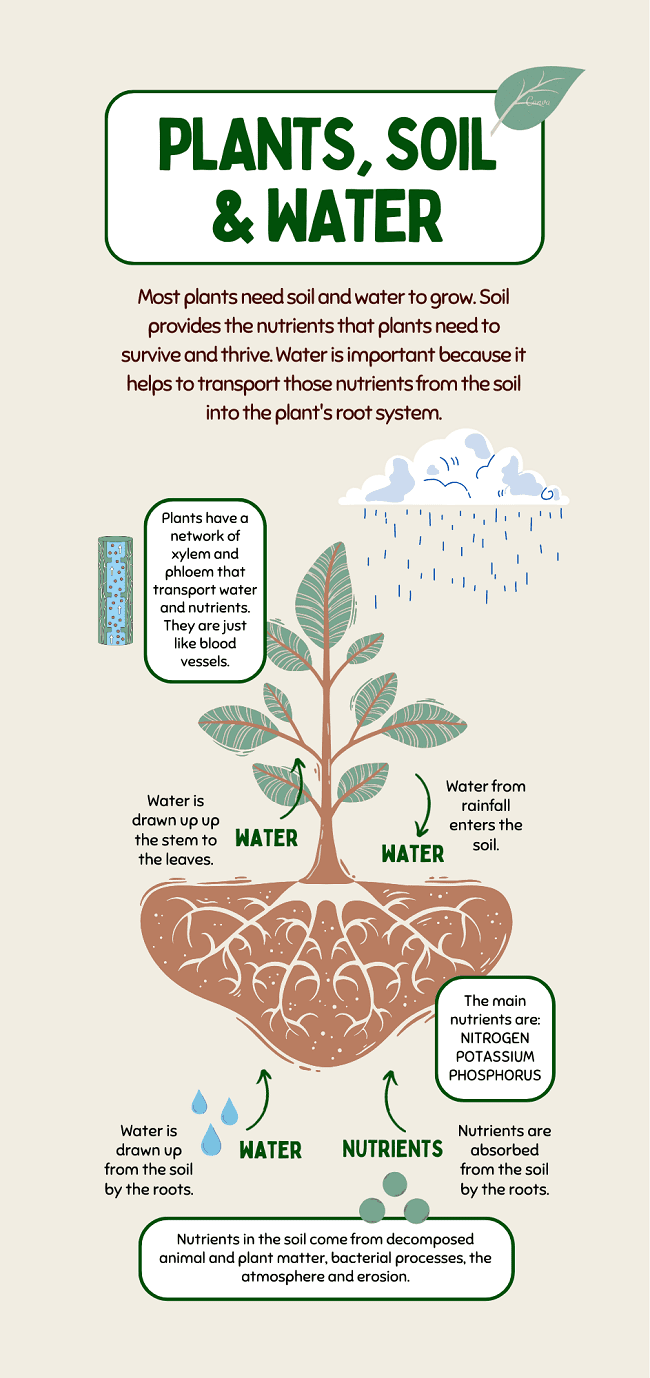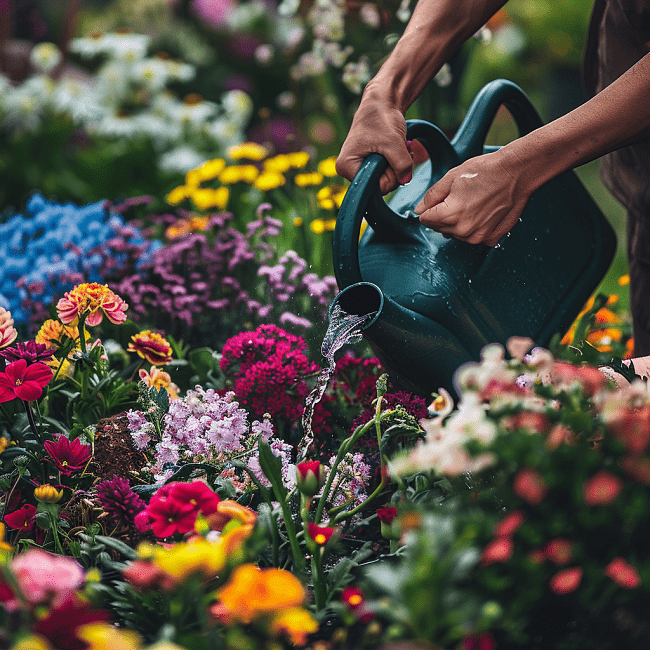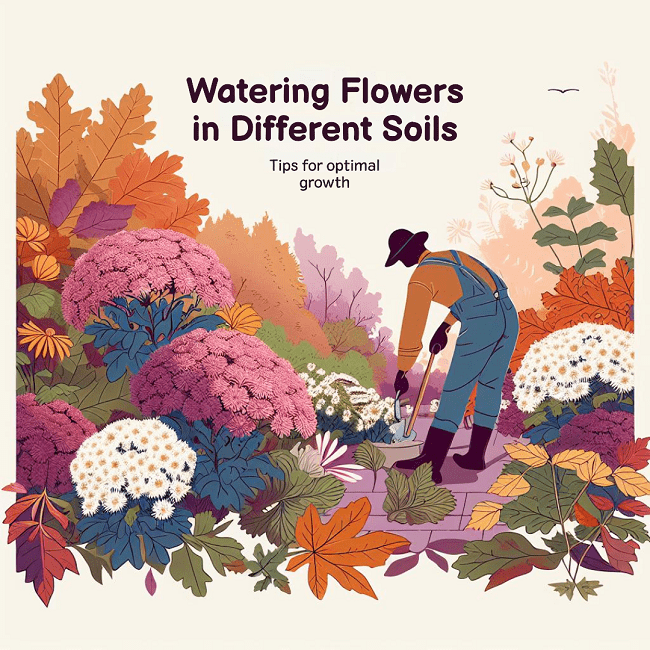Guide to Watering Techniques for Different Flowers

Properly watering flowers is essential for their health, vibrancy, and blooming success. Various flowers require distinct water needs based on their type, soil condition, climate, and whether they are planted in pots or garden beds. Correct watering practices support strong root development, nutrient absorption, disease prevention, and the longevity of both annuals and perennials. This guide aims to highlight effective watering techniques for different flowers, emphasizing their unique water requirements.
Overview of Flower Watering
Water is crucial for flower growth, second only to sunlight. The watering method and frequency for flowers vary by species, location, and whether they are potted or in-ground. General guidelines include watering early in the day to avoid fungal growth and checking soil moisture before adding more water. Annual flowers require consistent moisture throughout their growing season, while perennials and flowering shrubs benefit from less frequent but deeper watering. Container plants may need more frequent watering to prevent drying out.
Correct watering is vital; under or over watering can cause significant issues. Insufficient water can stress plants, hinder growth and flowering, and potentially kill the flowers. Excessive watering can suffocate roots, promote disease, and wash away soil nutrients. Monitoring your flowers and adjusting your watering techniques accordingly can prevent these problems and ensure a flourishing garden.

When to Water Flowers
Best Time of Day
The best time to water flowers is in the early morning, before the heat of the sun intensifies. Morning watering allows the leaves and flowers to dry throughout the day, reducing the risk of fungal diseases and minimizing evaporation loss. The ideal watering window is between 4-8 am. Always consider the weather forecast and skip watering if rain is expected.
Watering Frequency
The frequency of watering depends on the type of flower, soil conditions, weather, and other factors. Annuals generally prefer consistent, light watering every 1-2 days. Perennials and flowering shrubs may only need a thorough soaking once or twice a week. Container plants may require watering twice a day in hot conditions. It's better to check soil moisture than adhere to a strict schedule.
Signs Your Flowers Need Water
Aside from soil moisture, the flowers themselves will display signs of needing water. Symptoms of underwatering include wilting and drooping leaves. Overwatering signs include falling flower buds, yellowing leaves, or the presence of mold/mushrooms. Observing these indicators can help you accurately determine watering needs.
Watering Different Types of Flowers

Watering Annual Flowers
Annual flowers require consistent moisture throughout their growing season. After planting post-last spring frost, maintain continuous moisture for seed germination. Once seedlings appear, lightly water them daily or every other day, depending on the climate. Established annual flower beds should receive 2-5cms of water weekly, either from rain or supplemental watering. Check the soil moisture at a 3-6cms depth before watering again.
Watering Perennial Flowers
Most perennial flowers prefer less frequent, deeper watering to foster deeper root growth. Water established perennials thoroughly once or twice a week during their first year. After establishment, they may require even less frequent watering. Focus on deep watering to reach the entire root zone. Newly planted perennials need more frequent, lighter watering initially.
Watering Flowering Shrubs
Flowering shrubs benefit from infrequent, deep watering once they mature. Aim to moisten the soil within the dripline of the branches. Assess soil moisture below the surface to determine watering needs. Some shrubs are drought-tolerant and need minimal water after they are established.
Watering Flowers in Different Soils
Soil type affects water needs and frequency for flowers. Different soils have varying water retention capabilities.

Watering Flowers in Clay Soil
Clay soils retain a lot of moisture but can lead to root damage and fungal problems if too wet. Water these soils less frequently but deeply, aiming for longer intervals between watering sessions. Allow the soil to partially dry out between waterings.
Watering Flowers in Sandy Soil
Sandy soils drain quickly and do not hold moisture well, requiring more frequent but smaller amounts of water. Water every few days to maintain the necessary moisture for
plant health.
Improving Water Drainage and RetentionTo improve drainage in clay soils, add organic materials like compost or peat moss. For sandy soils that drain too quickly, incorporating organic matter or clay can help retain more moisture. Mulching also aids in water retention.
Watering Equipment for Flowers
Choosing the right watering tools can simplify caring for your flowers.
Watering Cans and Nozzles
A quality watering can with a removable rose nozzle allows for switching between a gentle shower and a strong stream. Opt for cans that are easy to handle and lightweight, even when full. Copper cans prevent algae growth.
Soaker Hoses and Drip Irrigation
Soaker hoses and drip irrigation systems deliver water directly to the soil at a slow rate, conserving water and keeping foliage dry. Install these systems around the root zones in beds or containers.
Sprinklers and Misters
Various sprinkler heads, such as oscillating or misting types, efficiently cover large areas. Use sprinklers for extensive flower bed plantings, watering early to prevent mildew.
Automated Watering Systems
Automated irrigation systems connected to a water source simplify watering by following a custom schedule. Smart sensors detect rain and soil moisture, ensuring the system operates only when necessary.
Seeds of Wisdom
Proper watering is crucial for the health and longevity of flowers in gardens and containers. Different flowers have varying preferences for water frequency and volume, influenced by variety, location, soil, and other factors. Always check soil moisture before watering again and adjust schedules based on weather, soil type, and plant signs. Using the right equipment, such as watering cans, soaker hoses, or sprinklers, can make delivering the appropriate amount of water to flowers much easier. Following these guidelines will help your flowers thrive with well-hydrated, healthy soil and roots.
